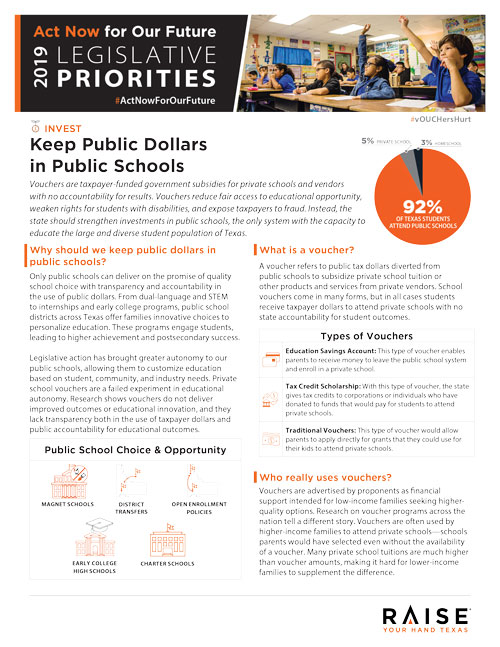
Attending a college in health sciences can offer many benefits. The curriculum is tailored to your strengths and interests. Graduates can pursue careers in the private and public sectors of health care. A graduate degree may be available for some. For example, a student interested in a career in medical research can study at a health science college to become a doctor.
Careers in health sciences
Students interested in a career in health sciences can choose from among several degrees. Associate degrees provide an excellent foundation for entry-level positions, while bachelor's degrees may lead to advancements in management and higher salaries. Specialization is also possible in the health sciences programs. Doctorate degrees, on the other hand, typically lead to positions in academics or advanced leadership within the health field.
A bachelor's in health science can lead you to a wide range of jobs. In the United States, the average salary for a healthcare worker is $63,000. Many health science jobs are not clinical. Health science graduates may be able to train others depending on their field.

Diagnostics and treatment are some of the most rewarding jobs in health sciences. These professionals must have patience and pay attention to every detail. They often have to deal with serious medical conditions and must be compassionate and understanding. Although many healthcare careers require direct patient care, most of these positions require an understanding of science and technology.
Coursework in health science majors
There are many undergraduate programs available at health science colleges. These programs examine the health care system, and the role of the providers in providing evidence based care. They emphasize leadership and professionalism, ethical communication skills and the ability to analyze current challenges and respond accordingly.
Students majoring in health science will take courses in health system management, health policy, and health care delivery. They will also take courses in ethics, leadership, and global health. Students may also be required to do a practicum at some health science colleges. This is an internship or work-experience in a related field.
Health sciences students learn about the causes and prevention of disease. Students also gain an understanding of human behavior that allows them to make positive changes and promote wellness. They may pursue postgraduate studies in nursing, genetic counseling, physical therapy, or other health-related fields. They might also become certified as health information or health administration.

Accreditation of colleges in health sciences
The revised Manual for Accreditation of Health Sciences Colleges and Universities - has been released. It provides an updated framework for assessing health education institutions, enhancing its quality and facilitating institutional excellence. The NAAC has drafted the manual in consultation and with other stakeholders such as Universities and Colleges. The new manual now includes key metrics and indicators related to health sciences. To better serve these institutions, the revised manual simplifies its contents.
There are many ways to accredit universities and colleges in the health sciences. Specialized accreditation is one of the most popular methods for accreditation. It focuses on specific programs and study areas. There are hundreds of these specialized accrediting bodies in the United States. Professional associations are a great way to evaluate schools in allied healthcare sciences. Although not an official accreditation, membership in professional associations does indicate a high standard for quality. In addition, accreditation by these organizations is considered to make students more competitive in the job market.
FAQ
What are the advantages of e-learning for students and teachers?
The benefits of e-learning include improved learning outcomes for both students and teachers. It also makes it possible to access information anytime and anywhere learners want. E-learning makes it possible for educators to communicate with their students via technology in ways that were not possible before.
E-learning enables teachers to provide personalized instruction and feedback while also supporting student progress. This encourages students to be more engaged and motivated. E-learning can be used by teachers to improve communication, collaboration, critical thinking, and other skills. You can also use it as a tool to improve your teaching practice by giving students the opportunity for self-reflection, reflection, and comparison of their experiences with others.
E-learning makes it possible to cut down on training costs. A teacher might want to teach his/her class about a topic but doesn't have the money to buy books or materials. If the same material can be found online, there is no reason to buy them.
How do I get started in eLearning
If you don’t know how create online courses, then you should start small. Start small by creating a tutorial or quiz.
Once you've mastered this, you can move on to more complex projects. It is better to create lessons using pre-built templates, if you don't have any knowledge of HTML.
What are some examples of e-learning tools you can use?
Interactive media such as video, audio and animation is the most effective way of delivering learning content.
These media allow learners the opportunity to interact with the content. They are also more engaging and retain learners.
Online courses include text, graphics, sound and interactive features.
These courses may be provided free of charge or for a fee.
Some examples of e-learning tools include:
-
Online courses
-
Virtual classrooms
-
Webinars
-
Podcasts
-
Video tutorials
-
Self-paced e-learning modules
-
Interactive
-
Social networking websites (SNS)
-
Blogs
-
Wikis
-
Forum discussion
-
Chat rooms
-
Email list
-
Forums
-
Quizzes
-
Surveys
-
Questionnaires
What should an eLearning program look like?
Your eLearning course needs to be interactive and encourage learners to engage with it.
This means that the design needs to be easy to navigate, and the content needs to be presented clearly.
This also means the content has to be engaging and entertaining.
To ensure that your eLearning course meets these requirements, you need to focus on three things:
Content
The first thing you need to decide is what content you want to include in your eLearning course. Not only should you decide what content to include, but also how long each section should take. For example, if you want to teach someone how to write a letter, then you need to decide how much time you want to spend on each topic.
Navigation
The second important decision you need to make is how you want your learners to navigate around your course. Do you want them to click through every page one at a time? Or do they want to be able to jump straight to the relevant sections?
Design
Finally, you need to decide how you want your course to appear. This includes deciding how long each screen is going to take to load and how large the font size should be. You must also decide whether you wish to include graphics (such photos).
After you've made these important decisions, it is time to test your plan to make sure it works.
How can I decide which eLearning platform I want to use?
There are thousands of eLearning platforms available today. Some are free while others are more costly.
Ask yourself some questions when choosing between these options.
-
Do I want to create my own learning materials? There are many free tools that you can use to create your own eLearning course. These tools include Adobe Captivate and Articulate Storyline as well as Lectora and iSpring Suite.
-
Are you looking to buy ready-made eLearning course? Pre-packaged courses can be purchased from many companies. They cost from $20 to $100 for each course. Mindjet, Edusoft, or Thinkful are some of the most popular.
-
Or do I prefer a combination? Many people find that combining their own materials and those of a company produces the best results.
-
Which option is best for me? It all depends on your circumstances. If you are new at eLearning you may prefer to create your own material. However, once you have gained experience, you may want to consider purchasing a pre-designed course.
What are the main types of elearning? Which are their purposes
There are 3 major types of online learning:
-
Content delivery – This type is e-learning that provides information to students. Examples include textbooks and lesson plans.
-
Instructional Design - This type is an e-learning that helps learners learn new skills. Simulators and tutorials are examples.
-
Learning management - This type of eLearning provides tools for instructors to organize and monitor student activity. These include virtual classrooms and discussion forums.
What are the systems used for e-learning?
E-learning is an online learning system where students learn from a computer screen. It allows for interactive activities such as quizzes, tests, discussions, etc.
E-learning also includes web-based programs which allow users access to information on the internet via a computer. This program is often called "online education".
Statistics
- The UK sample was relatively balanced in terms of gender (56% male) compared to the Gambian group (77% male). (sciencedirect.com)
- E-learning is intended to enhance individual-level performance, and therefore intend to use of e-learning should be predicted by a learner's preference for self-enhancement (Veiga, Floyd, & Dechant, 2001). (sciencedirect.com)
- Reliability, validity, and descriptive statistics (The Gambia). Empty CellCRAVEMeanSDACBICOEEHABHEHMPEPOPVSESITRAC0.770.635.080.842) in behavioral intention to use e-learning in The Gambia (53%) and the UK (52%), (sciencedirect.com)
- According to ATD's 2021 State of the Industry report, technology-based learning methods, including e-learning, accounted for 80 percent of learning hours used in 2020. (td.org)
External Links
How To
What are some examples e-learning? What are the advantages of elearning?
There are many types and styles of elearning that you can choose from, such as:
-
Distance Learning - Distance learning is a program that can be completed entirely online.
-
Onsite Training – A group of participants gathers together to receive training.
-
Virtual Classroom – A virtual room allows students, teachers, and experts to communicate through chat rooms, forums or other online tools.
-
Webinars: Webinars are live presentations that are delivered via the Internet. These allow you to make real-time connections with your audience.
-
Self-Paced Courses - These courses require no instructor and can be completed at your own pace. Logging in to the course is easy.
-
Interactive Tutorials (Interactive Tutorials) - These tutorials teach users how they can perform certain tasks.
-
Social Media Learning Portals - Twitter, Facebook and other social media platforms offer great opportunities for learning. Students can share ideas, ask questions, and get feedback from friends and peers.
-
Online Forums: Online forums are a great way to discuss subjects related to your study field.
-
Podcasting - Podcasting refers to the creation of audio files that can later be downloaded and listened too.
-
Video Conferencing - Video conferencing allows two or more people to meet face to face virtually.
-
Mobile Apps are created for tablets and smartphones.
-
Online Quizzes – Online quizzes allow you to quickly assess your knowledge on a particular topic.
-
Discussion Boards – These online communities allow you to post messages, view messages from others and respond to them.
-
Website Content Management System (CMS) – CMSs allow website owners to update their site content easily.
-
Blogging – Blogs allow readers to post comments and opinions.
-
Wikis: Wikis can be used to collaborate and allow multiple users simultaneously to edit pages.
-
Chat Rooms: Chat rooms are an online area where users can communicate with one another.
-
Email Lists - Email lists are groups of email addresses where you can send messages.
-
RSS Feeds: RSS feeds are news aggregators which collect articles from different sources and present them in an easy-to-read format.